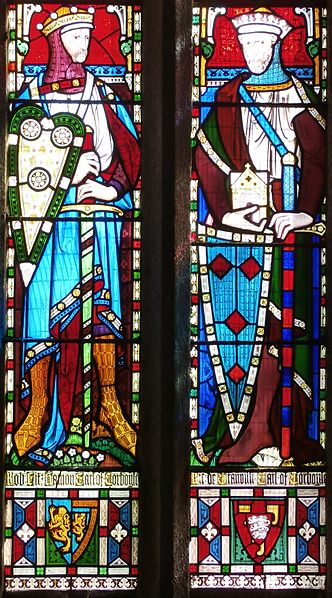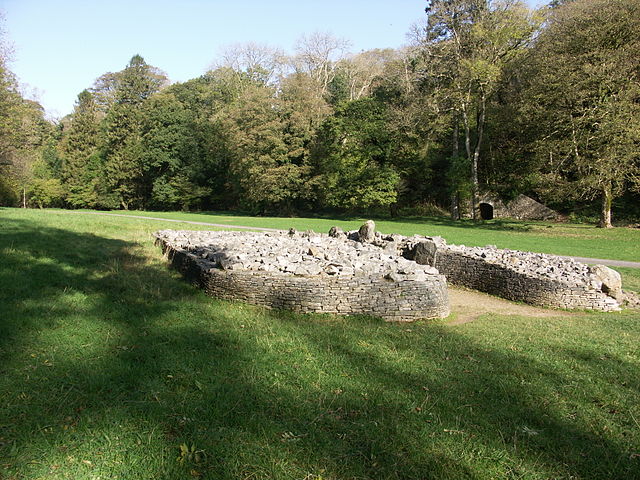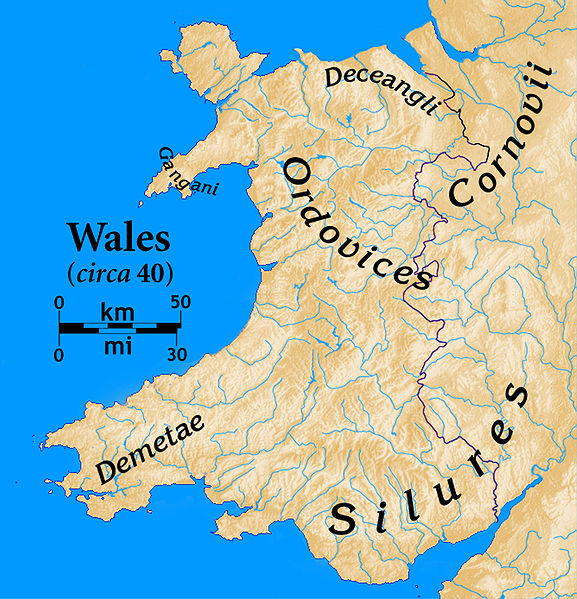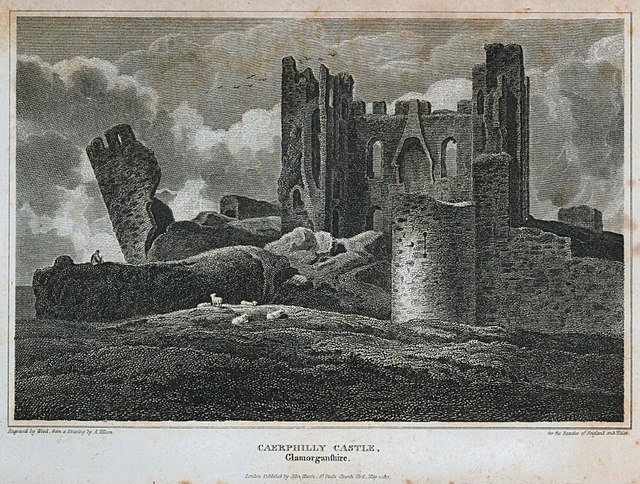Robert Fitzhamon, or Robert FitzHamon, Seigneur de Creully in the Calvados region and Torigny in the Manche region of Normandy, was the first Norman feudal baron of Gloucester and the Norman conqueror of Glamorgan, southern Wales. He became Lord of Glamorgan in 1075.
Robert Filius Haymonis et Sibilla uxor eius ("Robert son of Hamon (d.1107) and Sibilla (de Montgomery) his wife"). They are shown jointly giving the church building of Tewkesbury Abbey, of which they were founders. He wears a tabard showing attributed arms of: Azure, a lion rampant guardant or. Underneath below his wife is shown a shield of: quarterly 1 & 4: Azure, a lion rampant guardant or; 2&3: Gules a cross or (Oddo and Doddo, Dukes of Mercia, Saxon founders of Tewkesbury Abbey
1860 imaginary depiction of Robert FitzHamon (d. 1107) (left) and his younger brother Richard I de Grenville (d. post 1142) (right), Church of St James the Great, Kilkhampton, Cornwall
Until 1974, Glamorgan, or sometimes Glamorganshire, was an administrative county in the south of Wales, and later classed as one of the thirteen historic counties of Wales. Originally an early medieval petty kingdom of varying boundaries known in Welsh as Morgannwg, which was then invaded and taken over by the Normans as the Lordship of Glamorgan. The area that became known as Glamorgan was both a rural, pastoral area, and a conflict point between the Norman lords and the Welsh princes. It was defined by a large concentration of castles.
Parc Cwm long cairn a Neolithic chambered tomb on the Gower Peninsula
St Lythans burial chamber a Neolithic portal dolmen in the Vale of Glamorgan
Tribes of Wales at the time of the Roman invasion (The modern border with England is also shown)
Caerphilly castle, c. 1812






